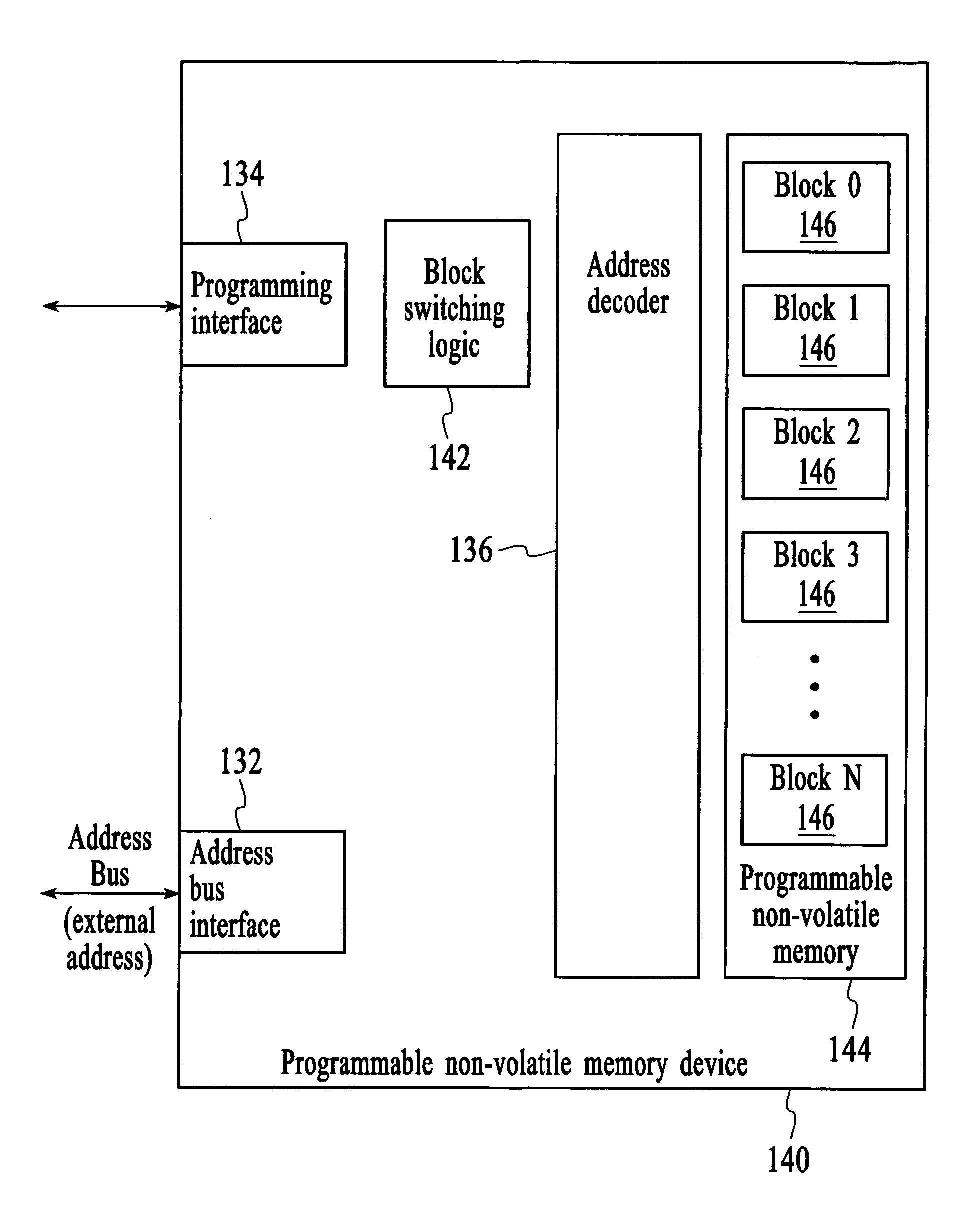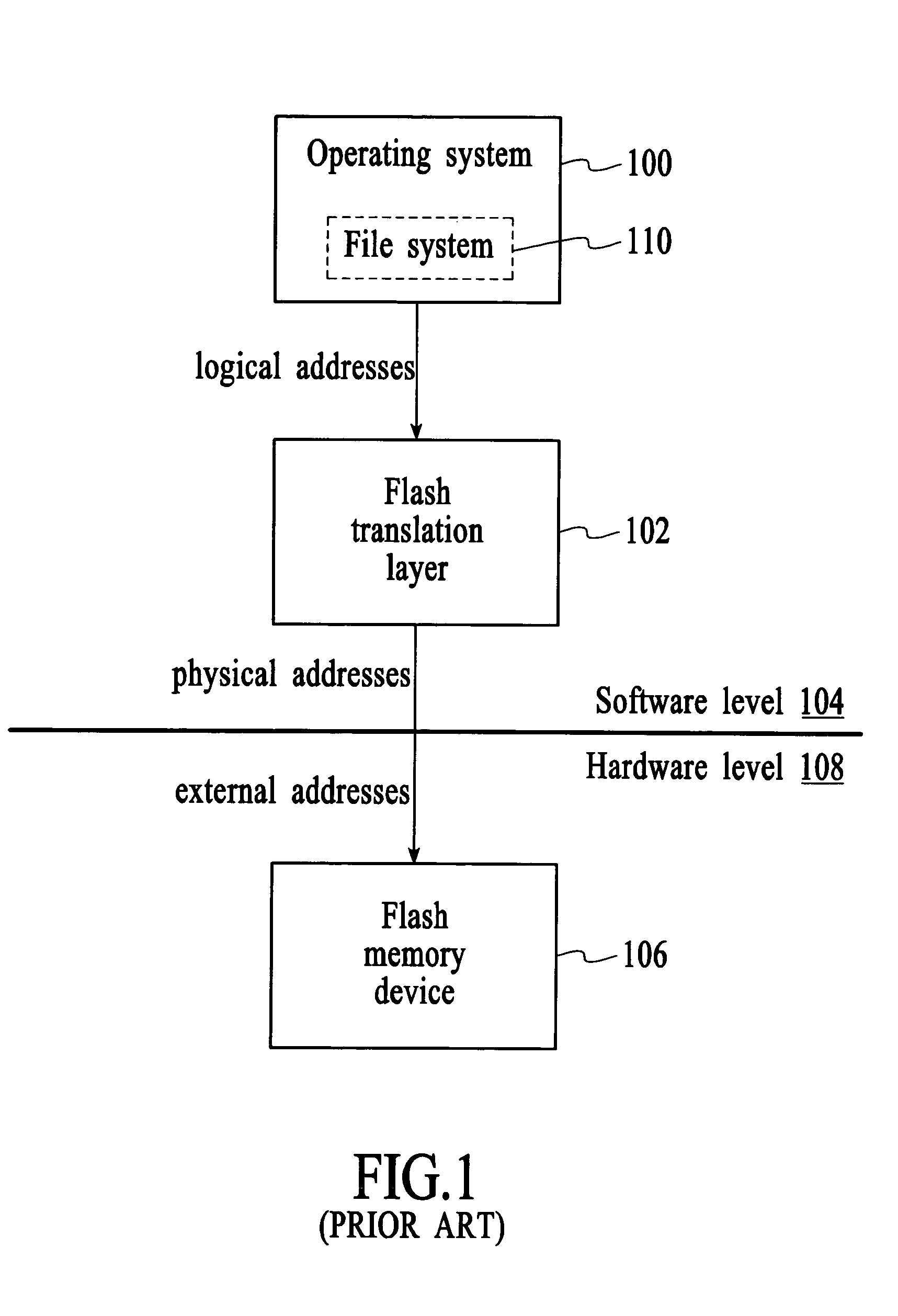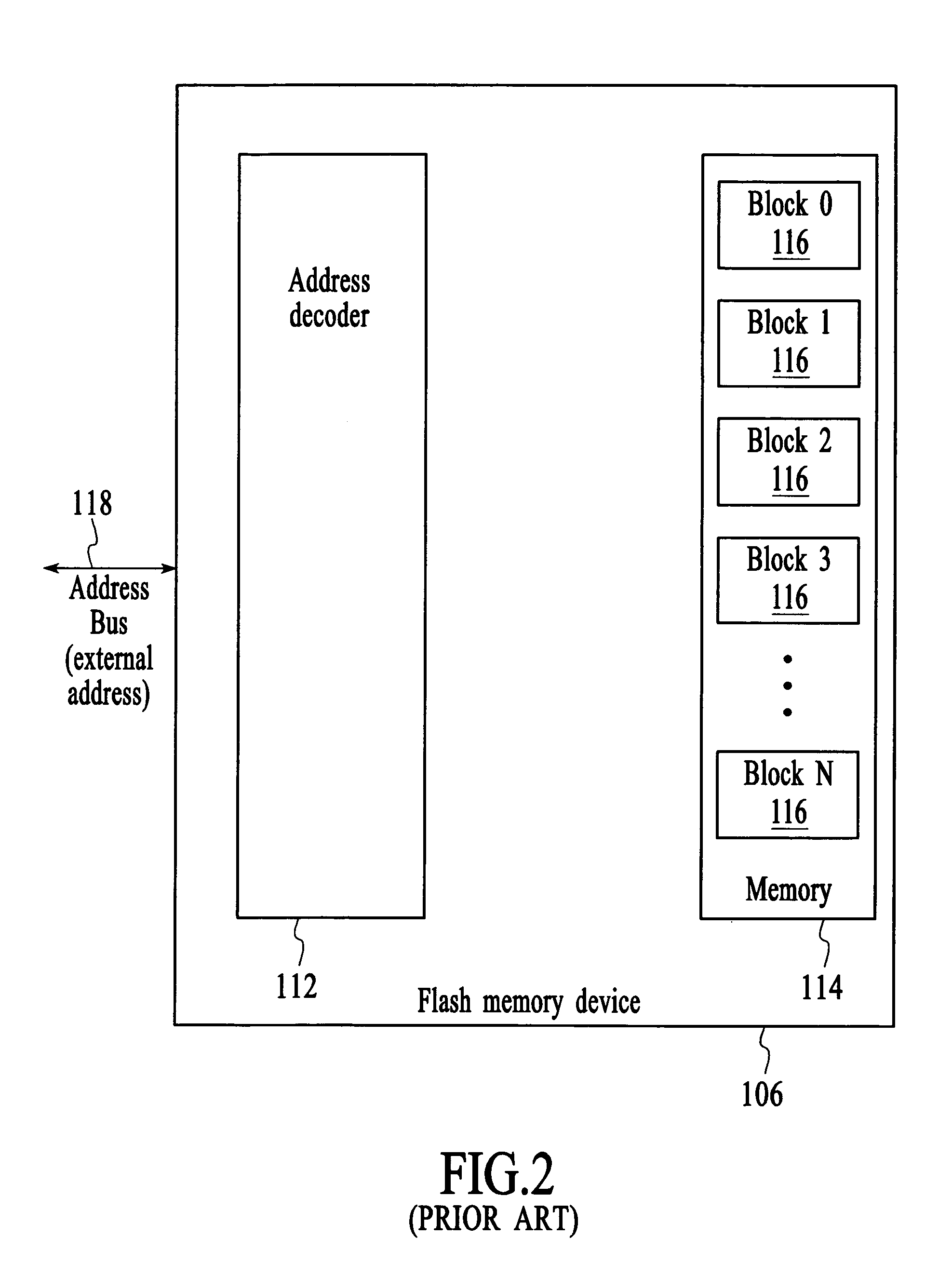Device-level address translation within a programmable non-volatile memory device
a technology of non-volatile memory and device level, applied in the direction of memory adressing/allocation/relocation, micro-instruction address formation, instruments, etc., can solve the problems of flash translation layer, inability to achieve translation between logical and physical addresses, and relatively complex software that consumes valuable resources
- Summary
- Abstract
- Description
- Claims
- Application Information
AI Technical Summary
Benefits of technology
Problems solved by technology
Method used
Image
Examples
Embodiment Construction
[0026]FIG. 4 depicts a block diagram of a computer system 130 that includes a processor 132 and a programmable non-volatile memory device 140. The processor can be any type of processor from a simple single function processor to a multifunction central processing unit. The programmable non-volatile memory device may be any programmable non-volatile memory device including, for example, a flash memory device, EEPROM, non-volatile RAM, a complex programmable logic device (CPLD), flash-based field programmable gate arrays (FPGAs), and battery-backed RAM. The processor communicates addresses to the programmable non-volatile memory device to control read and write operations. The addresses that are received by the programmable non-volatile memory device are referred to herein as “external addresses” because the addresses are received from an element that is external to the programmable non-volatile memory device.
[0027]In accordance with an embodiment of the invention, the programmable no...
PUM
 Login to View More
Login to View More Abstract
Description
Claims
Application Information
 Login to View More
Login to View More - R&D
- Intellectual Property
- Life Sciences
- Materials
- Tech Scout
- Unparalleled Data Quality
- Higher Quality Content
- 60% Fewer Hallucinations
Browse by: Latest US Patents, China's latest patents, Technical Efficacy Thesaurus, Application Domain, Technology Topic, Popular Technical Reports.
© 2025 PatSnap. All rights reserved.Legal|Privacy policy|Modern Slavery Act Transparency Statement|Sitemap|About US| Contact US: help@patsnap.com



